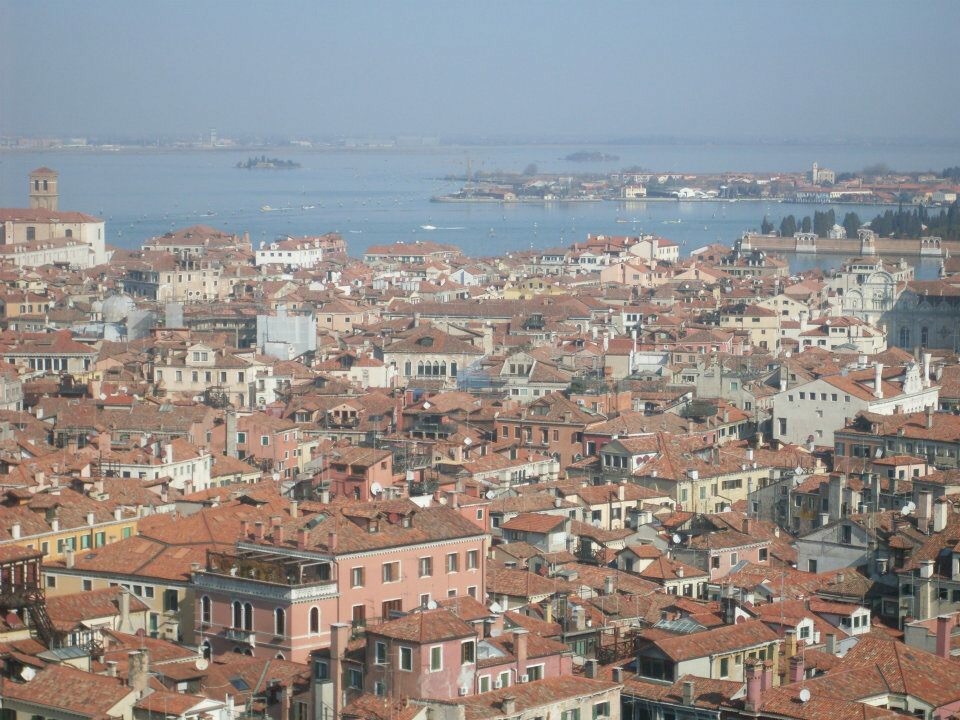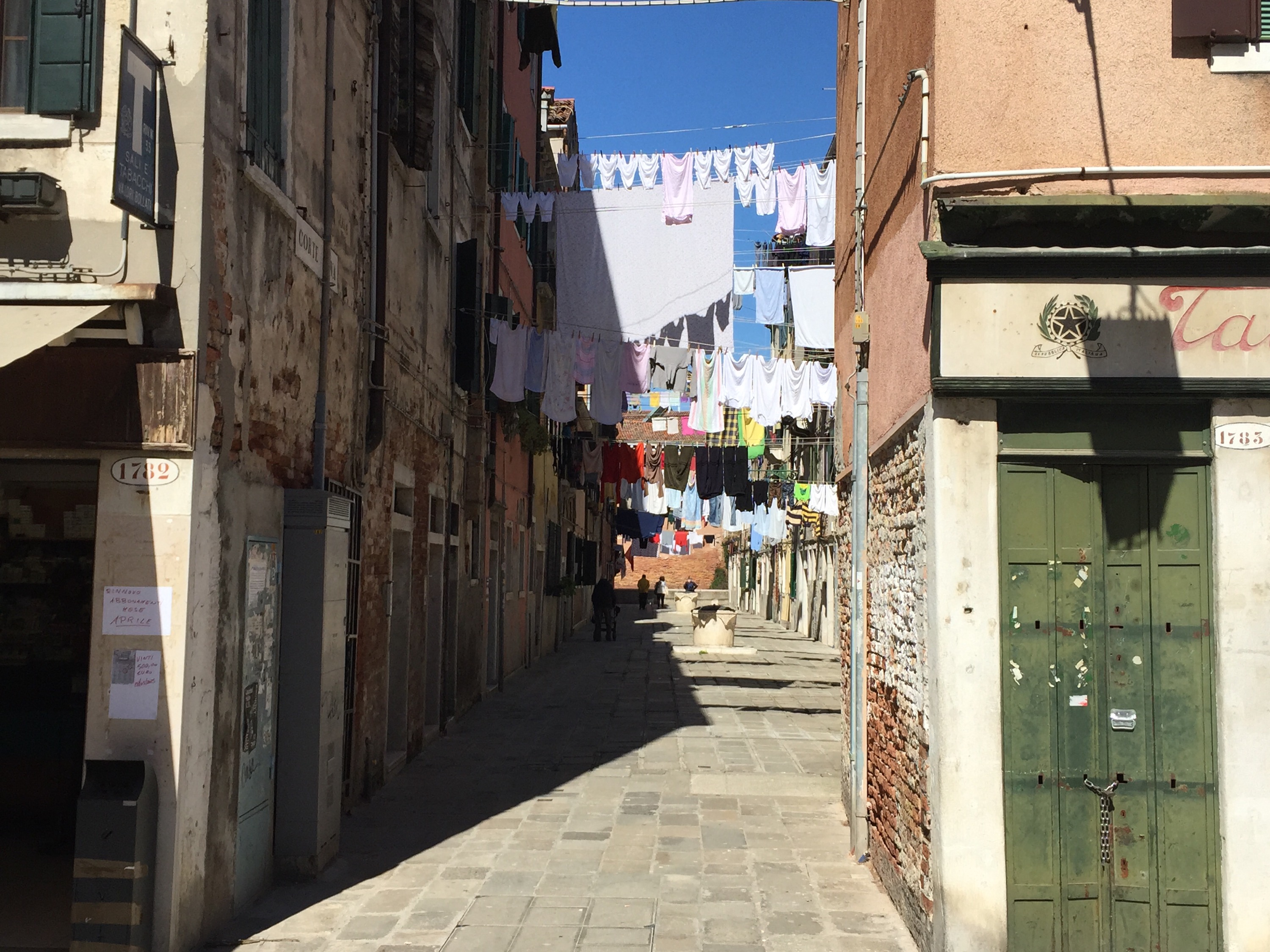If you follow me on Twitter, Facebook or Instagram you may well have seen that at the end March (the 24th to be exact) I packed up my hand luggage sized suitcase (!) and headed to the historic and the beautiful Venice… For the 4th time.
Some people seem to resonate completely with a city. Whether it’s Paris, Barcelona, New York or even good old London. For me, the “sinking city” in the north east of Italy is the city that has stolen my heart.
Since the first time I visited the city back in 2009, each visits leads to me discovering more things to love about it and I find myself uncovering new places to explore and of course, eat. Venice is known as the most romantic city in the world and it’s mystical maze of winding streets and waterways certainly see that millions of tourists a year fall in love with the city with such rich history and culture.
The History of Venice
Lets cast our minds back to the 5th Century A.D. To escape the barbarian raidings following the fall of the Western Roman Empire, the Venetian population on the Italain mainland escaped to the nearby marshes of the North Adriatic Sea. Although they found much needed refuge on the sandy islands of Torcelle, Iesolo and Malamacco, these settlements were initially intended to be a temporary measure. The Venetians gradually began to set up home amongst the marshes and it was at this point that the very beginnings of Venice’s began to take shape. The building or construction of a house would usually require a solid foundation, but the swampy marshes didn’t offer this luxury. Instead the Venetians came up with a solution for building within the swamp. Each building began its life in the form of hundreds (perhaps thousands) of wooden stakes, 4 metres in length, that would be driven down into the sandy ground. To do this, thousands and thousands of wooden stakes from the mountains of Slovenia, Croatia and Montenegro needed to be transported by water to Venice.

But wood rots, right? Correct. So how could an entire city be built on top of a material which rots when exposed to water? Good question. The decay of wood is caused by microorganisms, such as fungi and bacteria which needs oxygen to survive. As the wooden stakes were driven down far into the ground beneath the water and mud, it is not exposed to any oxygen and therefore does not rot. In fact, due to the constant flow of mineral rich water around and through the foundations the wood becomes petrified (no, that doesn’t mean that it’s scared!) and becomes a hardened stone like structure. It is said that the Santa Maria Della Salute church was built upon 1,106,657 of these wooden stakes. Mind blowing numbers.
On top of this upside down looking forest, wooden planks would be laid to provide a base, and on top of these planks several thick layers of marble formed the further foundations of the buildings. As marble is impermeable by water, these layers would provide the perfect base for the numerous grand palazzos we see lining the Grand Canal today. From the marble up, most of the remaining construction work was completed using ordinary brick or wood and was not in direct contact with the water of the canals.

The Venice that we know today is made up of 117 individual islands which are separated by canals and connected via bridges. 378 of them to be exact, including 4 that cross the Grand Canal. “Ponte della Costituzione” which links the Piazzale Roma area with Stazione di Venezia Santa Lucia (the train station!). “Ponte degli Scalzi” (“Barefoot Bridge”) which is just in front of the train station connects the Canneregio District to Santa Croce. As you make your way down the Grand Canal, towards Saint Marks Square, there is the infamous “Rialto Bridge”. The Rialto was once a drawbridge made of wood that allowed the crossing of the canal to sailing ships when Rialto was the ancient port of Venice. The last bridge is the wooden “Accademia Bridge” which is still a temporary structure within the city and links the Dorsoduro and Saint Marks districts.

So why is Venice said to be sinking?
When the buildings were originally constructed, the impermeable marble blocks were way above the cities water line and the ordinary brick buildings were well out of reach of waters way. However, as centuries have passed the weight of the buildings and land has driven the foundations deeper into the marshy sea bed causing subsidence of the buildings. Along with this, the Adriatic plate on which Venice sits, is subducting beneath the Apennines Mountains and causing the city and its environs to drop slightly in elevation.
It is estimated that in the 20th century Venice has sunk 120mm and at the same time sea levels have risen by 110mm. Thats 220mm in total or almost 9 inches. Now, that may not sound like a lot (unless you’re a man!) but if you take into consideration the number of years that Venice has essentially been “sinking” for, each mm adds up to a significant amount and will only increase as time goes by potentially leading to the sinking of the city in its entirety. One of the other issues the city faces is the erosion of the buildings. When the water rises above the impermeable marble, the movement of the canals that run through the city gradually erode the bricks of the buildings at the waters edge. The underwater motion of the numerous motorised boats that travel up and down the canals on a daily basis has also been proven to be a cause of the accelerated erosion. In protest of the huge cruise ships that enter the Venetian port on a regular basis, angry locals protested the influx of tourist carrying ships that cause damage to the city due to their enormous engines by swimming in the Giudecca Canal.
Furthermore, the tidal exchange between the water of the Ventian Lagoon and the sea causes the canal water to have the same salt concentration as the sea. This means that the constant lapping of the salt water against against the buildings and the water level having risen against the impermeable marble means the water enters the pores of the bricks and as the water dries, salt crystals are left behind to corrode the brickwork. This can cause entire sections of a buildings brickwork or render to crumble away causing thousands of pounds worth of damage to the building and sometimes leaving the building unsafe. It isn’t just the direct affect of the salt water against the brick, in some parts of the city you can see where the magnificent freezes and intricate brickwork have been eroded away by the salt water in the air.
 It’s incredible to think that the lagoon and canals, the very things that set Venice aside from other cities and has protected it from countless foreign invaders is the biggest threat to the cities survival. As well as subsidence and corosion of the buildings, Venice faces flooding dozens of time a year due to increased rainfall and high water (known as aqua alta) caused by the increasing affects of climate change. Despite the fact that these destructive elements cannot be reversed, a number of preventative solutions have been proposed to rescue the delicate city from any further sinking… or to try and slow down the process somewhat. One of which being the Mo.S.E. (Modulo Sperimentale Elettromeccanico, or Experimental Electromechanical Module) Project. Mo.S.E. involves 79 mobile floodgates within the mouth of the lagoon to separate it from the Adriatic sea when the incoming tide exceeds one meter above the usual high water mark. It is through this technique that it hoped that, although the subsidence of the buildings is uncontrollable, the high tides and flooding will prevent any further damage towards the city.
It’s incredible to think that the lagoon and canals, the very things that set Venice aside from other cities and has protected it from countless foreign invaders is the biggest threat to the cities survival. As well as subsidence and corosion of the buildings, Venice faces flooding dozens of time a year due to increased rainfall and high water (known as aqua alta) caused by the increasing affects of climate change. Despite the fact that these destructive elements cannot be reversed, a number of preventative solutions have been proposed to rescue the delicate city from any further sinking… or to try and slow down the process somewhat. One of which being the Mo.S.E. (Modulo Sperimentale Elettromeccanico, or Experimental Electromechanical Module) Project. Mo.S.E. involves 79 mobile floodgates within the mouth of the lagoon to separate it from the Adriatic sea when the incoming tide exceeds one meter above the usual high water mark. It is through this technique that it hoped that, although the subsidence of the buildings is uncontrollable, the high tides and flooding will prevent any further damage towards the city.
I can’t help but think that perhaps one of the reasons that I have so much love for this magical city is because of its extreme vulnerability against the elements and the impending fear that this beautiful city and its exquisite history could one day suffer the same fate as the lost city of Atlantis.
There’s also something so astoundingly special about a city that seems to be suspended in time.

Stunning. I went as a kid, but haven’t been since. My love for Italy has taken me to Matera, Pisa, Arezzo and Florence this year, but Venice and Rome are high up on my hitlist!